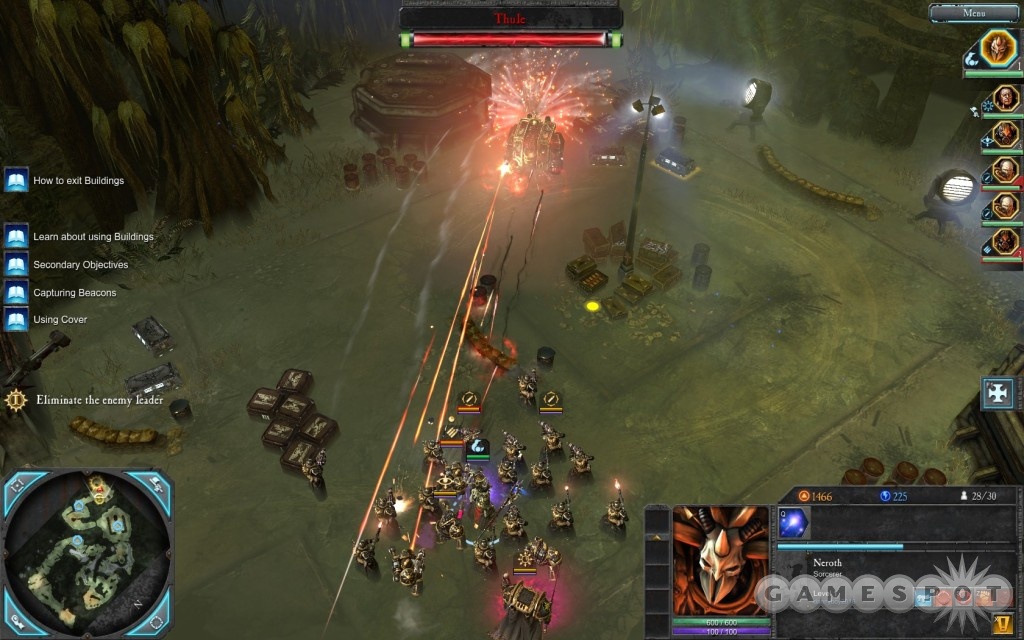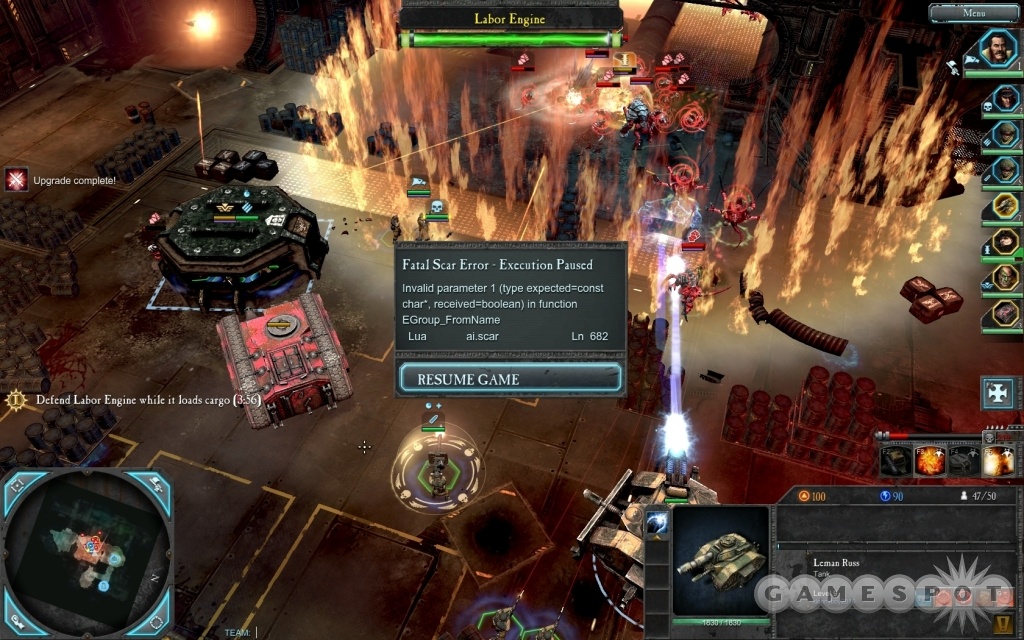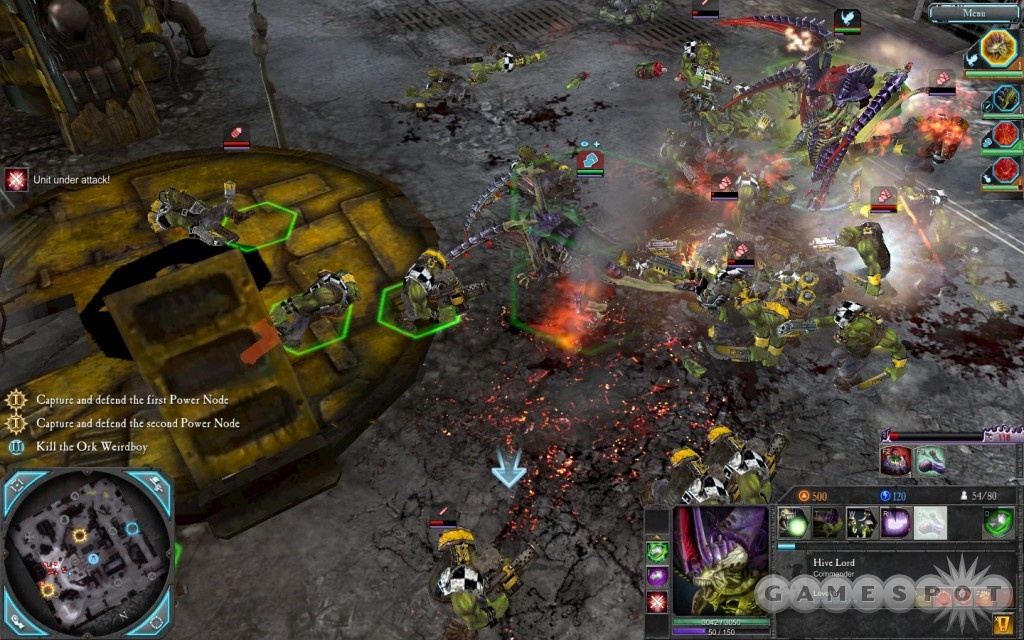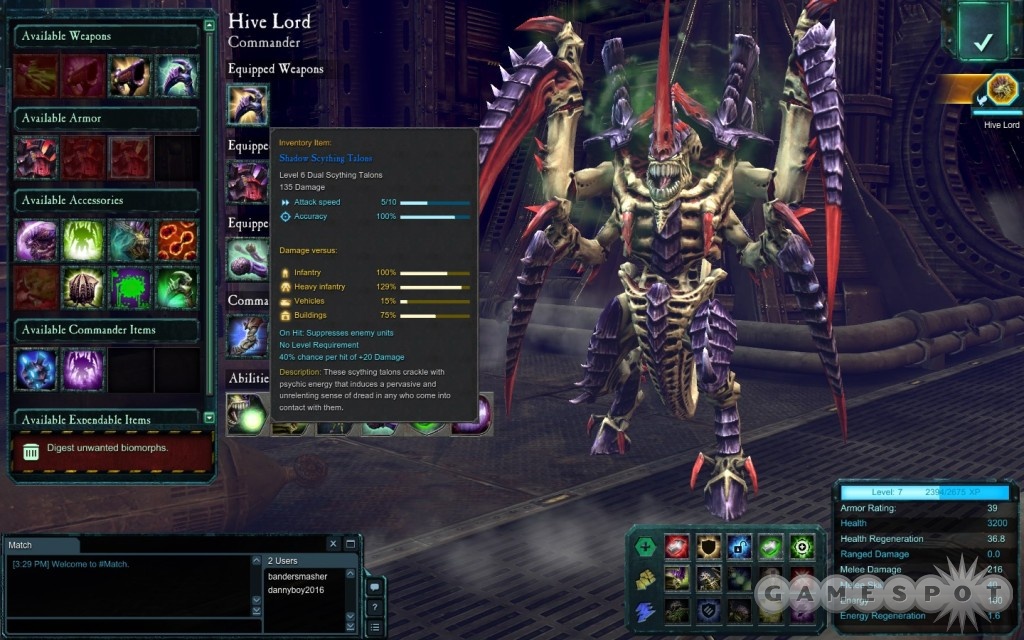Warhammer 40,000: Dawn of War II - Retribution is the second stand-alone expansion to Dawn of War II, a real-time strategy/tactical role-playing game set in the Warhammer: 40,000 universe. Chaos Rising, the previous stand-alone expansion, required ownership of DOWII if you wanted to play the original's factions in multiplayer. Retribution goes one step further by allowing you to play all six sides in both the single-player and multiplayer portions of the game without owning any of the preceding titles. Keeping everything fantastic from its predecessors and improving upon their flaws, Retribution is a must-have for DOWII fans and a great point of entry for newcomers.

The highlight of Retribution is its campaign, which is set on the long-suffering planets of subsector Aurelia. After decades of warfare and demonic infestation, Aurelia has now been slated for destruction by the Holy Imperial Inquisition. However, the true source of the sector's problems is the corrupt Space Marine Chapter Master Azariah Kyras, and his destruction may stay the Inquisition's hand and spare the sector its fiery doom. While the campaign's story and opening cutscene are decidedly focused on the Space Marines, the five other factions have their own reasons for opposing Kyras (beyond a desire to save Aurelia for themselves). Their motivations generally make sense, but the need for each faction to experience the same basic story arc leads to occasional holes in the plot. An unnecessary case of Eldar on Eldar violence is particularly inexplicable. Less problematic are the simpler narratives of the Orks and Tyranids, who are motivated by, respectively, a desire to obtain an Inquisitor's hat and an instinctual impulse to consume everything in the galaxy.
Regardless of which of the six factions you decide to play as, Retribution's campaign feels like a hybrid of Dawn of War II's campaign, which focused on micromanaging a handful of hero units, and a more traditional RTS. During each mission, you can collect resources to spend on building units or temporarily improving the stats of your heroes. For instance, you can buff up the Imperial Guard Commissar Lord Bernn's health and have him punch tanks to death, or you can field a few tanks of your own. Likewise, when picking mission rewards, you must choose between grabbing better war gear for your heroes and making your army "more killy" by unlocking unit types or upgrades. This can be a tough call because heroes are insanely useful when properly micromanaged, especially if you carefully choose new abilities while leveling up. For instance, you might be able to take out a teeming mass of Orks by slowing down time with one hero while setting the area on fire with another. If you tire of micromanaging heroes and prefer a good old-fashioned tank column, you can leave most of the heroes behind for a mission in exchange for an increased population cap and powerful honor guard units that may be rebuilt or reinforced for free.
Mission objectives are more diverse than in the original Dawn of War II, where you'd repeatedly replay the same maps and where the goals generally consisted of defending power generators or defeating a boss. In Retribution, you play each map only once per campaign, and there is only one optional power generator defense mission. Some of the boss battles in Retribution offer additional variety. For example, in one level, you fight an Ork tank that takes a good 20 minutes to kill with conventional weaponry, but which can be baited into rolling over explosive barrels to its destruction. Other mission highlights include fleeing from a gigantic Baneblade tank, ambushing Ork convoys, and escaping from a planet while an orbital bombardment tears it asunder.

Though the campaign is generally excellent, it suffers from a few bugs that occur almost exclusively while playing as the Imperial Guard, the new side introduced in this expansion. Lord General Castor, the chief hero in the Imperial Guard campaign, is particularly cursed. During the second level, there is a cutscene where a bridge is destroyed, and without fail, Castor's bodyguards get stuck on inaccessible ledges beneath the bridge. Unfortunately, Castor and his bodyguards are considered to be a single squad, so he remains trapped in place until his stranded squadmates perish. Furthermore, using Castor's special ability to air-drop a tank onto the battlefield causes multiple bugs on maps where you normally couldn't build tanks. In one instance, the game wouldn't recognize that the mission objective had been completed; in another, game-pausing messages about a "Fatal Scar Error" popped up constantly. Without these "forbidden tanks," the missions were bug free.
Retribution doesn't add any new multiplayer game types to the mix, but it still offers several improvements that distinguish it from the previous games. The most notable addition is the inclusion of the Imperial Guard faction for the skirmish modes. Basic Imperial Guardsman infantry squads, while fragile, are extremely useful units because they can fix allied vehicles, as well as create their own heavy cover and construct automated turrets. Each of the Guard's hero units can deploy bunkers that, in addition to sheltering troops, may be upgraded to heal nearby vehicles or infantry. Additionally, the bunkers may be booby-trapped, just in case the enemy captures them. While these bonuses make the Imperial Guard excellent at locking down an area, they have also been blessed with awesome tanks like the Baneblade, which is a behemoth adorned with at least a half-dozen turrets. Thus, the Imperial Guard faction is incredibly useful in team games; it's capable of both holding strategic points in the early game and contributing awesome firepower once it's time to crush the enemy under gigantic tank tracks.

Additional improvements to multiplayer include the scuttling of the Games for Windows Live service in favor of Steam alone. Furthermore, all six factions and 30-plus skirmish maps are playable regardless of whether you own DOWII or Chaos Rising, which makes Retribution more enticing for people who skipped the last two games. Also, the Last Stand mode now boasts a new map, as well as a hero unit from the Imperial Guard, but these don't come at the expense of your older characters from Chaos Rising, which can be ported over without any difficulties. Cooperative campaigns have also been improved by allowing both players to build new units during levels and rewarding you with special war gear for helping a friend through the campaign.
Retribution remains as visually stunning as its predecessors. The environments are still largely destructible, and watching your tanks demolish an enemy's cover never gets old. Individual units have excellent animations, and the sight of a Space Marine turning an Ork's head into a fine red paste with a giant warhammer is truly beautiful. However, the maps sometimes get a little repetitive because they have a tendency to be littered with the ruins of destroyed tanks, craters, and burned-out buildings. Maps set on the pristine jungle planet Typhon really stand out in comparison, with its waterfalls, rivers, and lush canopies showing the potential beauty to be found in Retribution.
The excellent production values don't stop with the visuals. While the score and sound effects are generally excellent, it is the voice acting that really shines. Lord General Castor in particular has a wonderfully pompous "Great White Hunter" vibe about him, though that stems from good writing as much as the voice actor. Additionally, the Ork hero, Kaptin Bluddflagg, will define what an Ork pirate sounds like for generations to come. As always, too much "Dakka Dakka Dakka" can be grating on the ears, but it wouldn't be Warhammer 40,000 without it.

Retribution offers a lot of content for its $30 price tag. Each play-through of the campaign takes somewhere between five and 10 hours, which, coupled with multiplayer, makes this a superb value. The ability to play every faction in both multiplayer and the campaign; the high production values and attention to detail; the hilarious characters and spectacular set pieces; the single-player, co-op, and competitive game modes; and Retribution's incredible value all overshadow its few failings. Retribution isn't just a stand-alone expansion; it stands out as the best iteration yet in this series.